Hello Everyone
This is @max-pro from, #Bangladesh
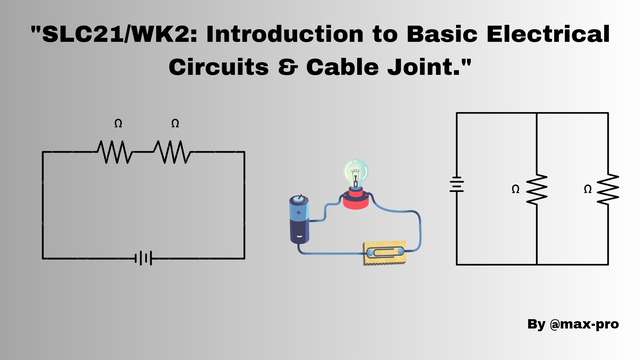 Made by Canva
Made by Canva
Assalamu Alaikum to all. Hope you all are well. By the grace of Allah I am also well. Today I came to participate in this "SLC21/WK2: Introduction to Basic Electrical Circuits & Cable Joint" wonderful topic of Steemit Learning challenge. We have @solaymann and @mahadisalim as teachers. So this is a great topic.
Electrical Topic in Steemit Learning competition will teach students in depth about various engineering fields and improve their skills. Electrical engineering is a field that has a lot of scope for research and innovation in new technologies, power systems, renewable energy and smart grids. I will answer some questions in a practical way.
| A :- What is called an electrical circuit? Mention the importance of circuits in electrical engineering. |
|---|
I am a diploma electrical engineer. So I have general knowledge about electrical. Hence electrical circuit refers to a system consisting of one or more electrical components through which an electric current can flow in a specified path. An electrical circuit usually consists of components such as a power source such as a battery or power supply, connecting wires, resistors, capacitors, transistors, fuses, etc. Current flowing through the circuit helps the system to complete its work.
IMPORTANCE OF CIRCUITS IN ELECTRICAL ENGINEERING :-
| Power Distribution | Power is supplied to various electronic devices through electrical circuits. |
|---|---|
| Generation and Control | Circuits are used to generate and control electricity, such as blocking current, controlling current, etc. |
| Communication Systems | Electrical circuits are used in telecommunications, internet, radio and TV broadcasting. |
| Transmission and Conversion of Energy | Circuits help to convert energy into various forms and conduct it to various devices. |
| Information Processing | Computing and other information processing uses various circuits that facilitate data processing. |
It is impossible to imagine electrical engineering without circuits. Because it acts as an important channel of power, control and information flow. The basic components of an electric circuit are mentioned below.
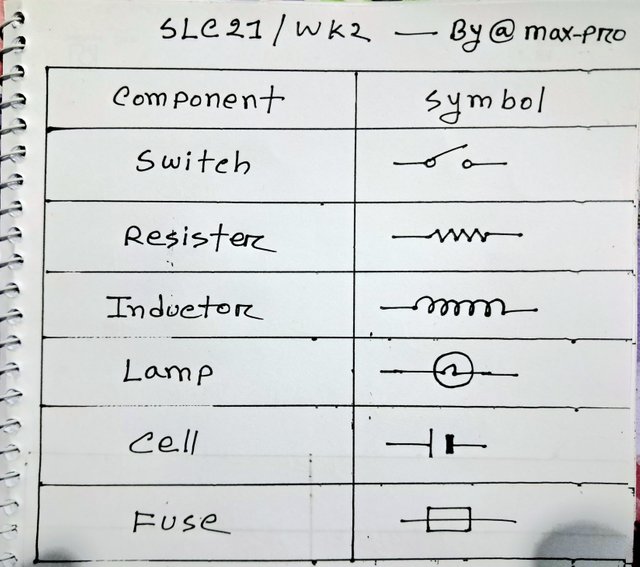 basic components of an electric circuit
basic components of an electric circuit
- (B) :- Mention at least two differences between series circuit and parallel circuit.
The two main differences between series circuit and parallel circuit are,
1️⃣ In case of flow path:-
| Series Circuit | Parallel Circuit |
|---|---|
| There is only one path through which current flows. All elements are connected one after the other. | consists of multiple paths. Electricity has a different path for each element. |
2️⃣ In case of voltage division:-
| Series Circuit | Parallel Circuit |
|---|---|
| The total voltage is divided over each component, with a different voltage drop across each component. | Each component has the same voltage, because all components are directly connected to the source. |
- (B) :- Note the above two circuits and mention their names, and calculate the total resistance of the two circuit. Assume any value of R1 and R2 but not the value specified in the course.
As per the task given by our teacher I am using one 5 ohm and another 25 ohm resistor as resistance values. Then showing the details with total resistance calculation diagram.
| Series Circuit | 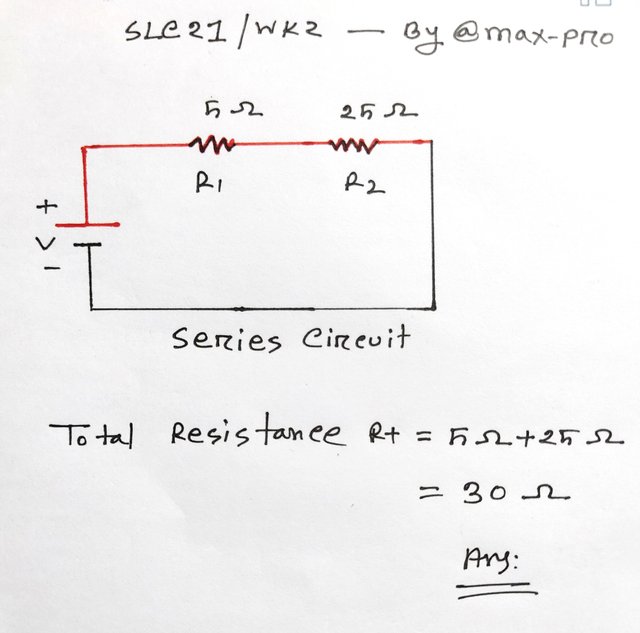 Total resistance is 30 ohm Total resistance is 30 ohm |
|---|
| Parallel Circuit | 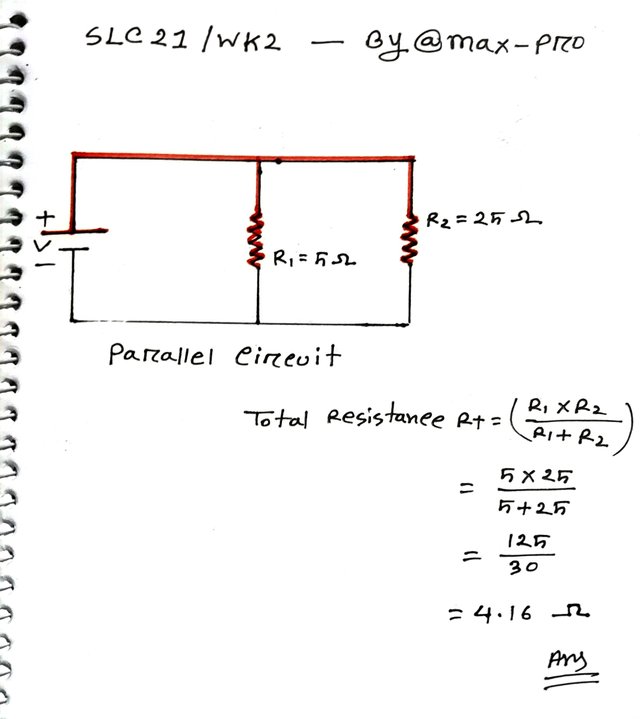 Total resistance is 4.16 ohm Total resistance is 4.16 ohm |
|---|
| C :- Take two pieces of wire and connect them properly. Be sure to mention consistent images and clear descriptions. |
|---|
- Step - 01 :- As required material I took 1×1.3 Rm (3W) = 3/22 size wire with 2 cores. These cables are used in house wiring in Bangladesh. Then I bought a Chinese knife and a plush that you can see in the picture below.
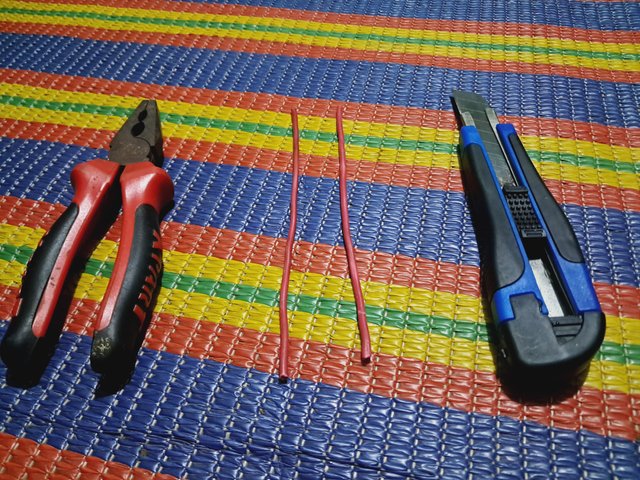
- Step - 02 :- Now I used the Chinese knife opened at a 30 to 60 degree angle while cutting the insulation as per the rules. I also had Safe Cutting Plus.
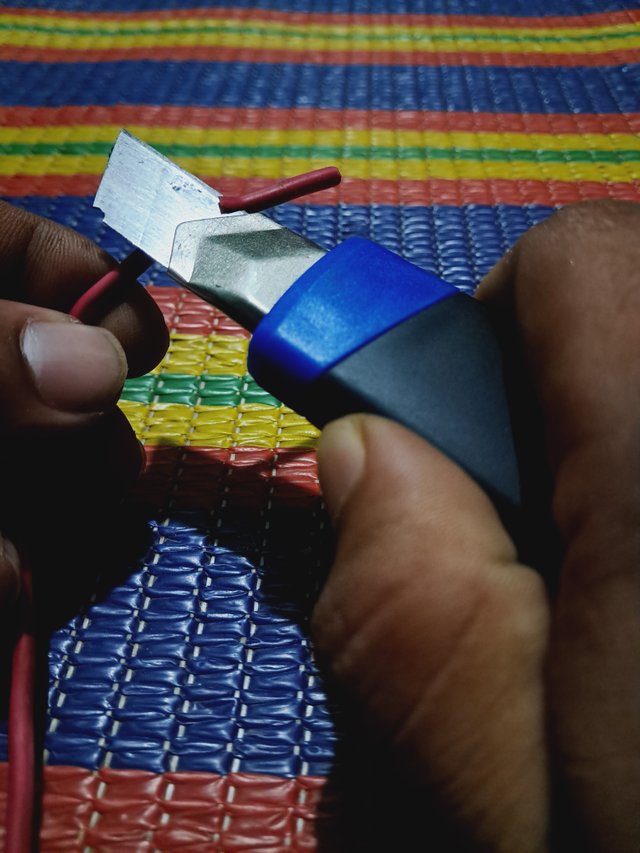 | 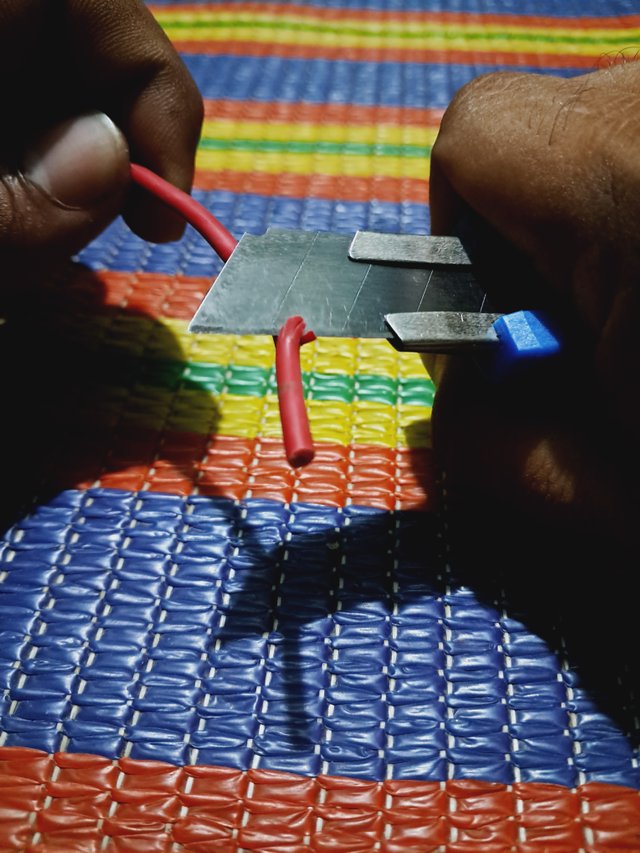 |
|---|
- Step - 03 :- Now I was able to disconnect the insulation from the surroundings this way. I then used my combination pliers to pull this insulation off.
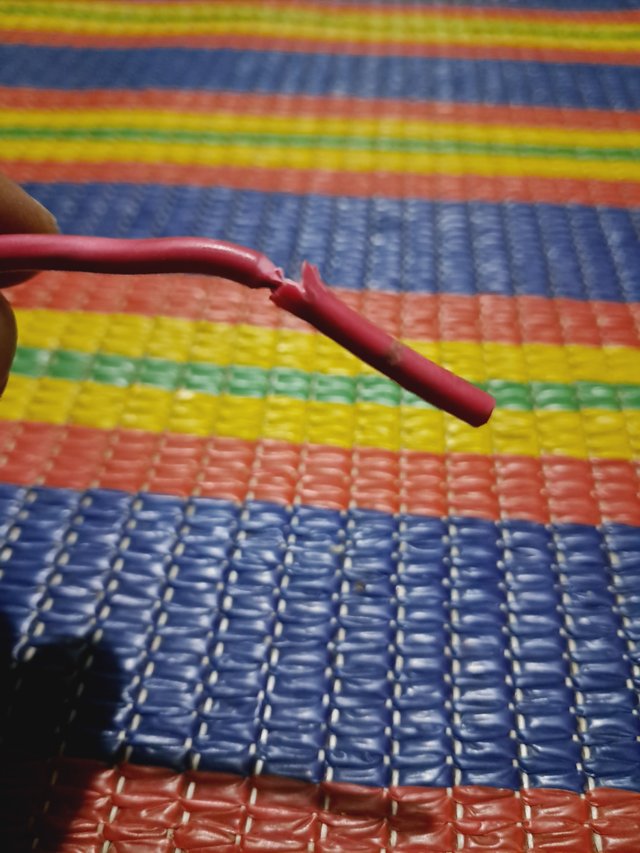 | 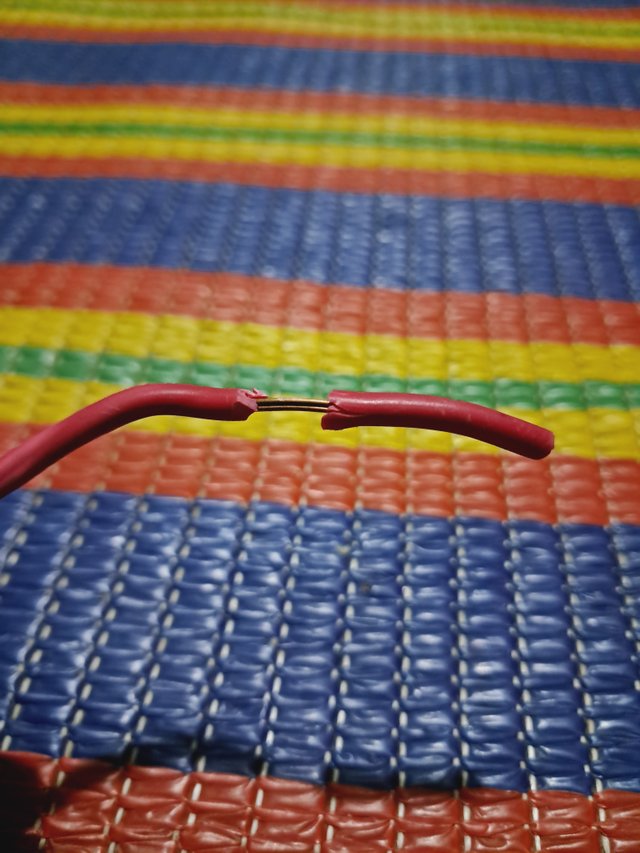 |
|---|
- Step - 04 :- Now I was able to clean the insulation of both wires nicely by 1 to 2 inches. I cut both sides in the same way.
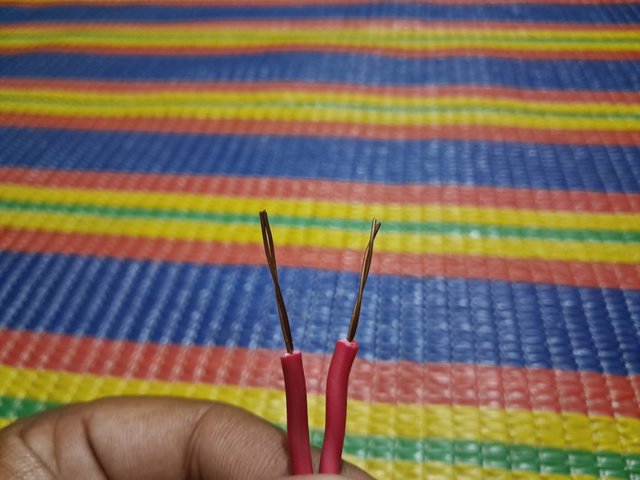 |
|---|
- Step - 05 :- Now I cut the wire insulation free and bent it 90° from both sides evenly along the middle of the two. Basically it is the opposite. Then I twisted the two stretches in opposite directions to make it tighter.
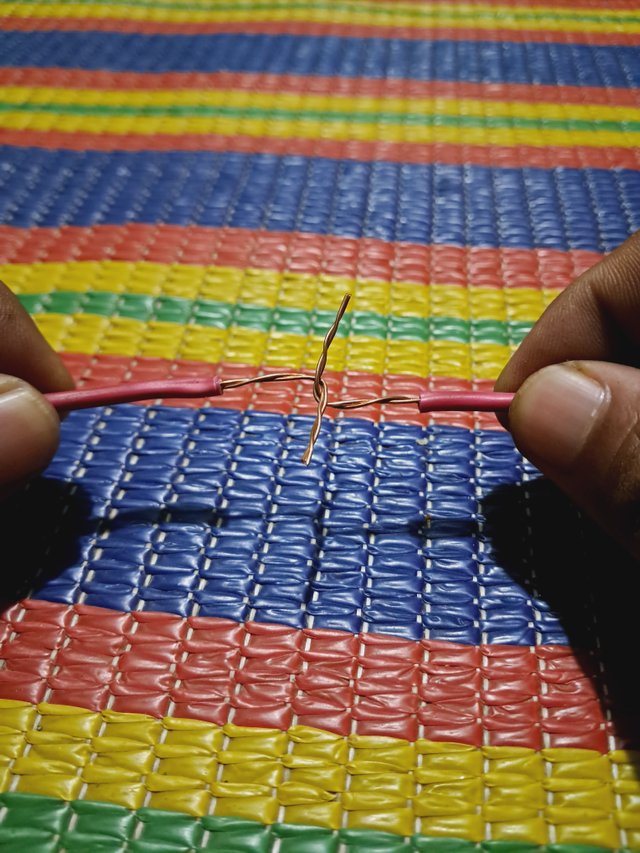 | 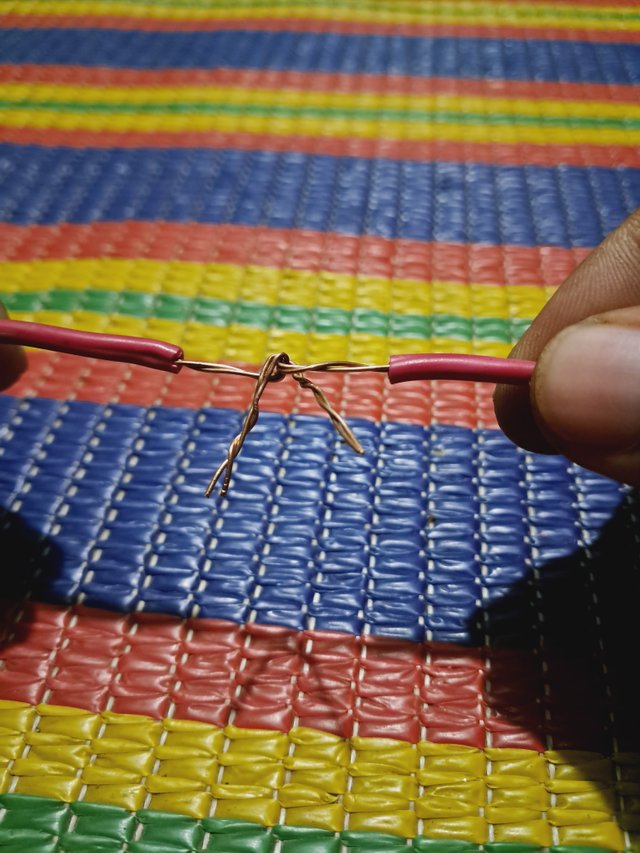 |
|---|
- Step - 06 :- Now I followed all the instructions of my teacher to complete the final step of wiring. I twisted the extended copper conductor paths for the opposite direction and clamped them tightly on both sides.
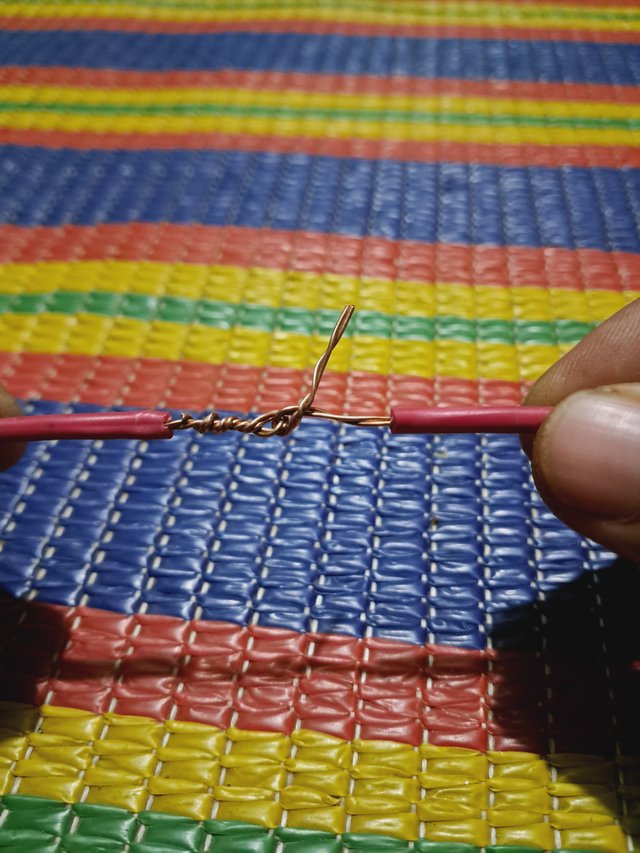 | 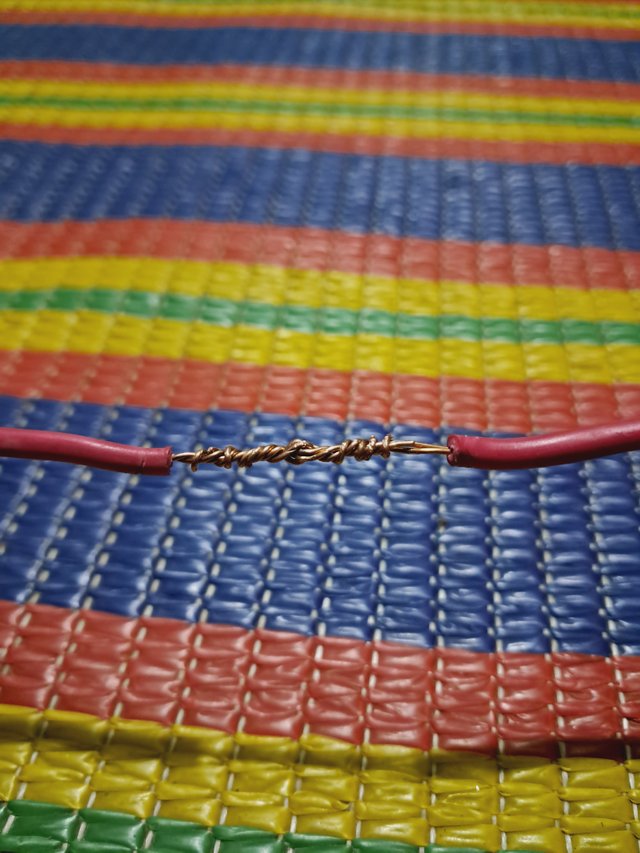 |
|---|---|
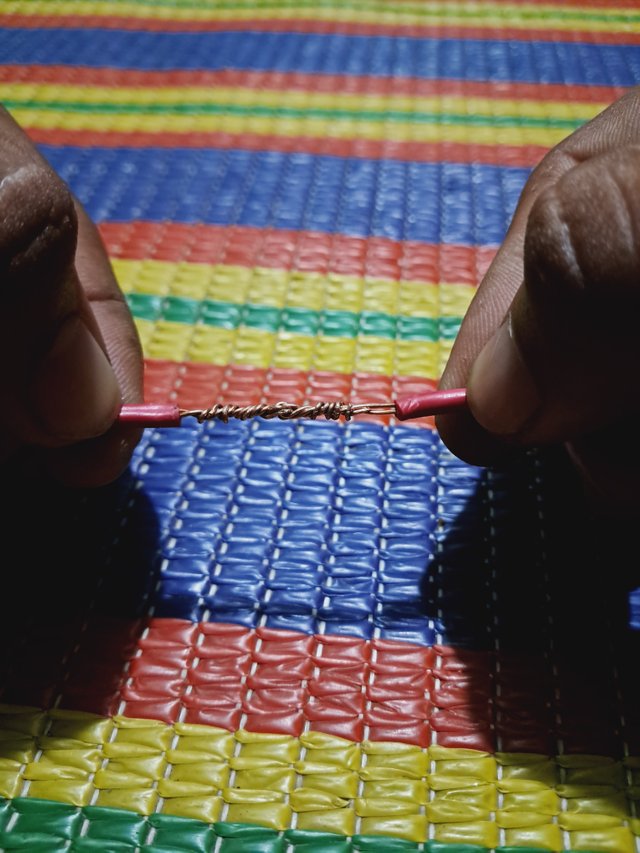 | 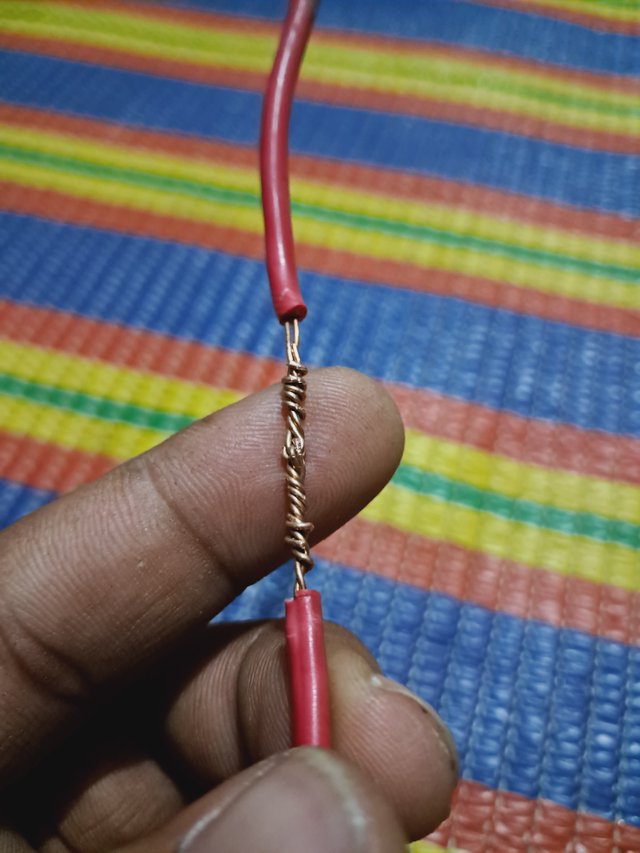 |
Now as you can see in the picture above this wire is firmly attached. This has to be done very carefully as any carelessness can cause the barbed part of the wire to enter the finger.
| After completing this lesson write what you learn in your own words. |
|---|
I used to do practical in class when I was studying diploma engineering. Then I did this series connection and parallel connection only for practical class but didn't think deeply. But these I thought deeply. We also learned how series and parallel circuits work and in which types of connections current flows in one way and in which in multiple ways.
I have done mathematical calculations in series and parallel connections to find out the value of resistance or other characteristic in various components which is important for pricing in real circuits. Next the instructions on how to connect the two wires were perfect. I got accurate results using all the tools. While connecting the two wires I thought that the two wires must be bent equally otherwise it might break due to shortness.
In this lesson we have learned many important things. Thanks to our teacher for such a wonderful presentation. Here we have more ideas about electrical circuits. This will help us later in more complex circuit design, its coupling issues and value analysis. So I am very happy to participate in this wonderful competition.
The Above Images Are Captured With My Poco M2 Pro Device.

So I am Inviting my lovely Steemian friends @stef1, @irawandedy, @kouba01, @selina1, @adeljose to Participate in this Competition.
X share link : https://x.com/maxpro1412/status/1854115241875148917?t=qg_tH6-c74AUDcA2waih5w&s=19
Downvoting a post can decrease pending rewards and make it less visible. Common reasons:
Submit
I've never seen and learned how to simply make a joint. Because in my house usually men do these things. Anyway, I learned a lot from your post. Thank you so much for sharing this great post with us and for mentioning me.
Downvoting a post can decrease pending rewards and make it less visible. Common reasons:
Submit
Thank you so much for spending your precious time on this post and giving such a wonderful comment. I wish you success. Best wishes to you.
Downvoting a post can decrease pending rewards and make it less visible. Common reasons:
Submit